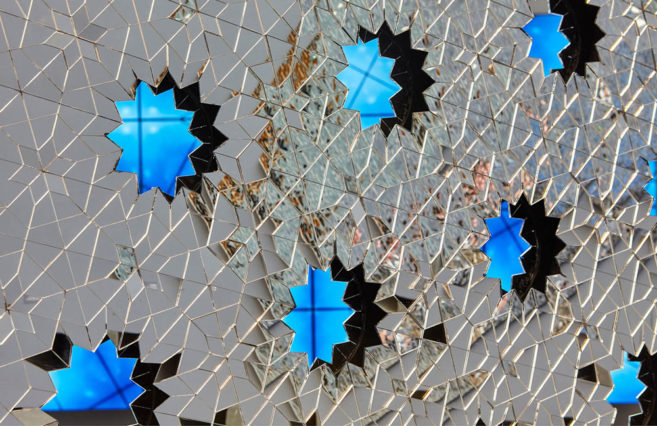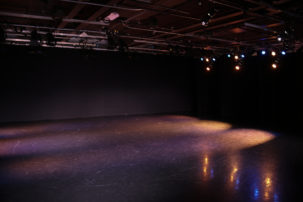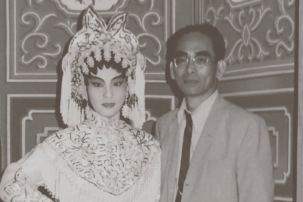I have taught Abdi Osman’s work several times, most recently in Black Queer Diasporas, an undergraduate seminar at my former institution. We viewed Abdi’s work alongside work by Zanele Muholi, Isaac Julien, Marlon Riggs and other Black diasporic queer and trans writers, visual artists and photographers. The students were transfixed by his images—on their own and in relation. And from sitting with Abdi’s work, and the series Labeeb in particular, as a class we began to think about a possible ethic and aesthetic of blur emerging from queer African and Black diasporic practice. In other words, we found Osman’s work to be extremely generative.
The wall text for his recent exhibition “Variations in Black, Queer, and Otherwise,” at the Art Museum at University of Toronto, begins with a quotation from Ashon Crawley: “To begin with the otherwise as word, as concept, is to presume that whatever we have is not all that is possible.” This more than what we have and that we are told is possible is the ground, it seems to me, of much of Osman’s work. We begin in the knowledge, to quote Rinaldo Walcott “of the still-living desires for more than what we presently have.”
Osman’s photographs are often in the language of portraiture. We meet Sumaya Dalmar first, in two portraits showing three quarters of her body. Sumaya is serious in a yellow Dirac, a photograph in which she is pensive and her face piercing is visible, and then in an orange Dirac, beautiful, perhaps coy, and slightly blurred—as if she is caught in movement—caught in a state of becoming. Five photographs and one video are gathered under the title Labeeb. On another wall is a video of Sumaya and a close-up photograph of two pill bottles—the names of the drugs only partially legible (unless you know what they are). There are also two side-by-side portraits of a seated Sumaya wearing a tank top and short skirt and then wearing a Dirac. (These particular photographs invoke the visual style of the West African photographers Seydou Keïta and Malick Sidibé, both of whom Osman names as influences).
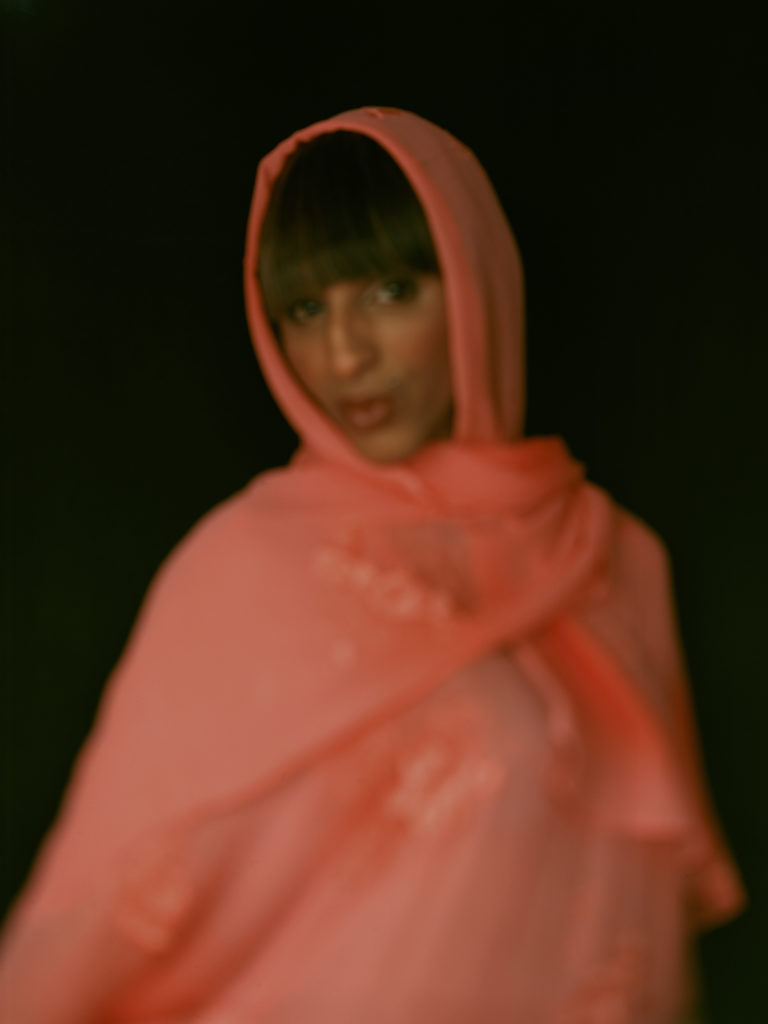 Abdi Osman, Labeeb, 2012. Photograph.
Abdi Osman, Labeeb, 2012. Photograph.
Osman’s attention to Sumaya brings me to a moment in the recent documentary Toni Morrison: The Pieces I Am (2019) when Morrison and Oprah Winfrey speak about the character Pilate from Morrison’s Song of Solomon (1977). They are talking about that moment when Pilate arrives at the funeral of her granddaughter, Hagar. Morrison and Winfrey both speak the final words that Pilate says and repeats in the church about her grandchild: Pilate strokes Hagar’s face, claims her (“My baby girl”) and then declares fiercely: “And she was loved!” “And she was loved.”
As I watched the videos and looked at the portraits of Sumaya—portraits that I was familiar with, that I had seen many times before and had taught with—that refrain from Song of Solomon echoed in my head. That is what Abdi makes so present in this work—“And she was loved”—a claim to relation, love and regard (by which I mean a caring and mutual attention to a life and its details). This is what Rinaldo Walcott, in Queer Returns: Essays on Multiculturalism, Diaspora and Black Studies, identifies as the “poetics of care of the self that frames how some contemporary Black artists engage the ‘dark and lovely’ subject of the Black image.”
The curators of this show, Dina Georgis and Sara Matthews, note that: “Beautiful fabrics gesture variations conjured in dreams, draped on bodies, and negotiated as we move through space.” Material is a large part of the show—scarves, banners and clothing figure prominently, whether jeans, Dirac, Abaya, Guntino or traditional Somali menswear. In his Discover Me Series (2007) and Discover US Series (2008–9), Abdi is among those subjects who are photographed in triptych; he appears wearing ripped jeans, a V-neck graphic T-shirt and newsboy cap, then in an Abaya and also in traditional Somali menswear. Abdi plays here on the logics and optics of discovery—how can you discover what is already there and present, whether visible to certain eyes or not? He invites the ethnographic gazes only to rebuff them, in favour of recognition, not discovery.

Abdi Osman, Discover Us Series...3, 2008. Photograph, 19 cm x 45.7 cm.

Abdi Osman, Discover Us Series...7, 2009. Photograph. 30.5 cm x 45.7 cm.
As Patrick Chamoiseau writes in “The Otherness to Be Lived,” in Migrant Brothers: A Poet’s Declaration of Human Dignity, “arriving, encountering, discovering is always in part to find again, to recognize. All that subsists, in an imagination practiced in the Open, are relational proximities, waves that connect.” Not discovery but discovering—connection. To quote Walcott again, Abdi’s work is engaged in “Homopoetics—the practice and analysis of how Black queers relate (or not) with other queers all the while producing modes of being that are both in concert with and against hegemonic gay and lesbian identities, homonormative inclusion, and Black homophobia…Black queer image-making contributes significantly to homopoetic relations and identifications across the Black diaspora.”
The Passport Series (2017) takes up the security theatre that permeates every part of Black life and imperils it. These four large photographs show passports and airport corridors—and the artist holds up his passport in three of them. These photographs are printed on large pieces fabric that are about the dimensions of a flag; those flags that appear in airports and that announce nation—announce belonging and unbelonging; borders and surveillance. In the exhibition brochure, Ellyn Walker writes of the project, “Supposedly representing his citizenship and thus ‘belonging’ to Canada, Osman’s passport is notably a ten-year visa that is ‘affixed to a Canadian passport that enables but does not guarantee entry into the USA’…This is especially heightened by the States’ recent implementation of the xenophobic Executive Order that targets and spectacularizes Muslims (particularly from Somalia) as ‘dangerous’ in spite of the fact that it is Muslim, Brown, and Black people who face real danger—that of increasingly organized white supremacy.”
So, again, although Canadian citizens don’t need a visa to visit the US and despite being a Canadian Passport holder, this passport holder has a Visa that enables its bearer to enter the US. Forced to have a double permission—admission that is still deniable, because even with it, he might not be allowed to enter. So all the better to go to Toronto’s Pearson Airport where the denial takes place prior to flying, when one must enter US customs before leaving Canada. Abdi’s banners appear like those flags that hang in many airport transit spaces. But these are marked by the interdiction for Black peoples.
 Abdi Osman, Gardens of the Mediterranean, 2018. Video still.
Abdi Osman, Gardens of the Mediterranean, 2018. Video still.
Surveillance technologies are always changing but the changing same is the degree to which Black people are surveilled—the ways that additional papers or additional screening are almost always required. The “joke not-joke” about the ways that if we aren’t immediately sent to secondary screening because of a name, where we’ve travelled or lived, national ancestry, etc., then we are almost always “randomly selected” when we travel. Hands and bags swiped for explosives, put through the backscatter X-ray machine, etc. Secondarily screened. Stopped.
Osman turns the meaning of secondary screening into something else. The screening screened, printed on fabric and displayed—becomes another kind of visual evidence.
Finally, Gardens of the Mediterranean (2018)—a split-screen video with narrative and voice-over in Italian with English translation—juxtaposes everyday scenes of work and movement in Venice with a beautiful Somali woman who sits on the rocks at a shoreline, looking out to sea.
Screen becomes sea and words appear across and on the waves. Who do they reach? The words come to us via Ubah Cristina Ali Farah’s narrative and voice-over. She tells of a grandmother and her relationship to a sea she does not love. Of river trips to sell and buy goods, of a husband lost on a dhow. Then, of the double tragedies of the Mogadishu shoreline, the industry, the pollution and then the war, and of those who attempt to make their way across the ocean. There is a perilous journey in which she almost drowns, and while she is being rescued she is exposed, and so she “always tells all the women they must not forget to put on their bras before leaving.”
Who is this woman on a rock, looking out to the sea? Is she real? A haunting? The figure one should have to encounter as one looks out to the sea? In the corner of the frame, we see white sunbathers in several of the shots who remind us of the presence of those people holidaying by the Mediterranean who encounter the living and the dead who make that perilous trip. Those white bathers are almost imperceptible—they are on the edge of the frame but they are the forces that frame our unsafety—those whose rights and borders must be protected.
But we return to the woman—the woman, perhaps, whose story we are hearing or the woman to whom the story is told. She sits, looks, keeps watch. Warning. Leading the shipwrecked to safety. Holding. Remembering.
This is Black Diasporic work. And all of Abdi Osman’s work is concerned with the ability or inability to move, and to be. Concerned with new modes of being human. With what it means to be precarious and to still make life. Each of these photographs and films take up transition: the transit between places and states, the body as fragile and tenacious. Osman’s work imagines possible presents and futures and he engages, re-visions and extends the work of other artists, Black geographers, writers, theorists. Put another way: Abdi Osman is not making work in a vacuum. He is an imaginative, responsive artist who knows the archives and knows that they are also works of fiction, works of creation. Osman is a photographer and media artist who is committed to making work that matters.

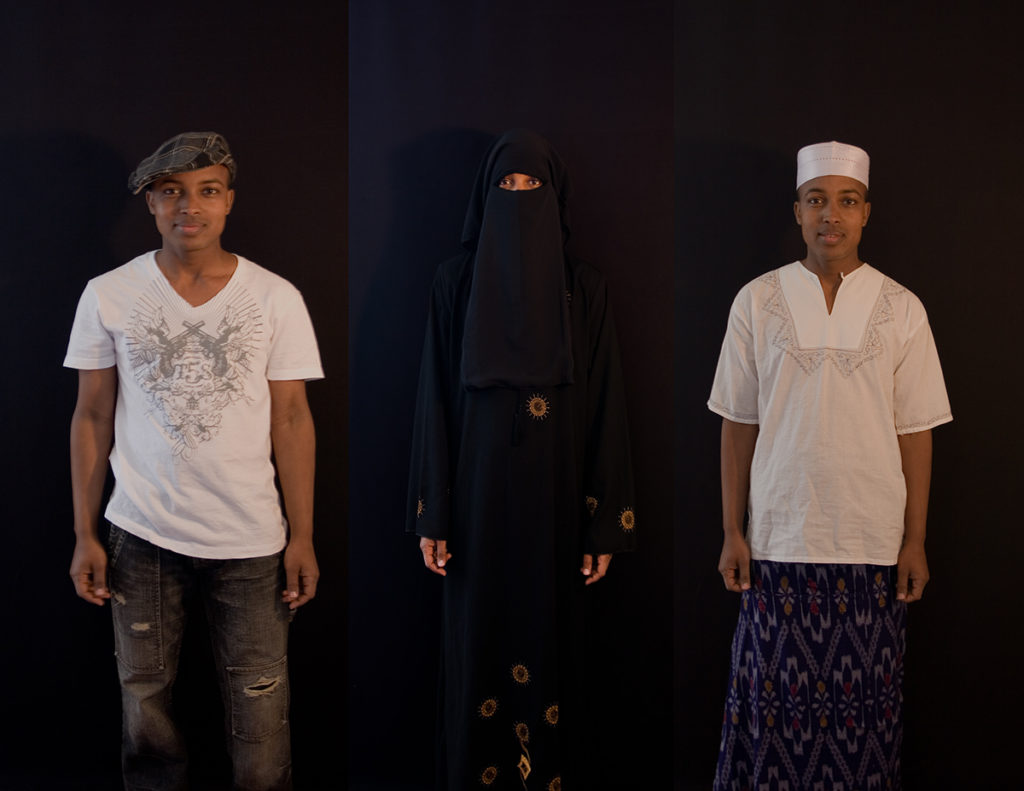 Abdi Osman, Discover Me Series...1, 2008. Photograph. 61 cm x 91.4 cm.
Abdi Osman, Discover Me Series...1, 2008. Photograph. 61 cm x 91.4 cm.
